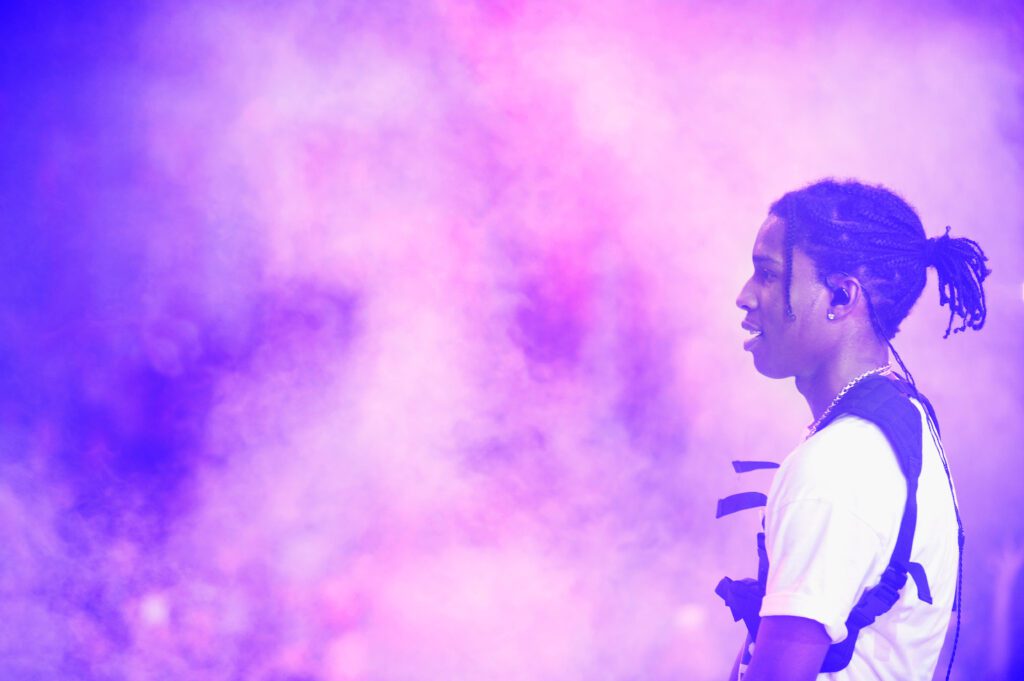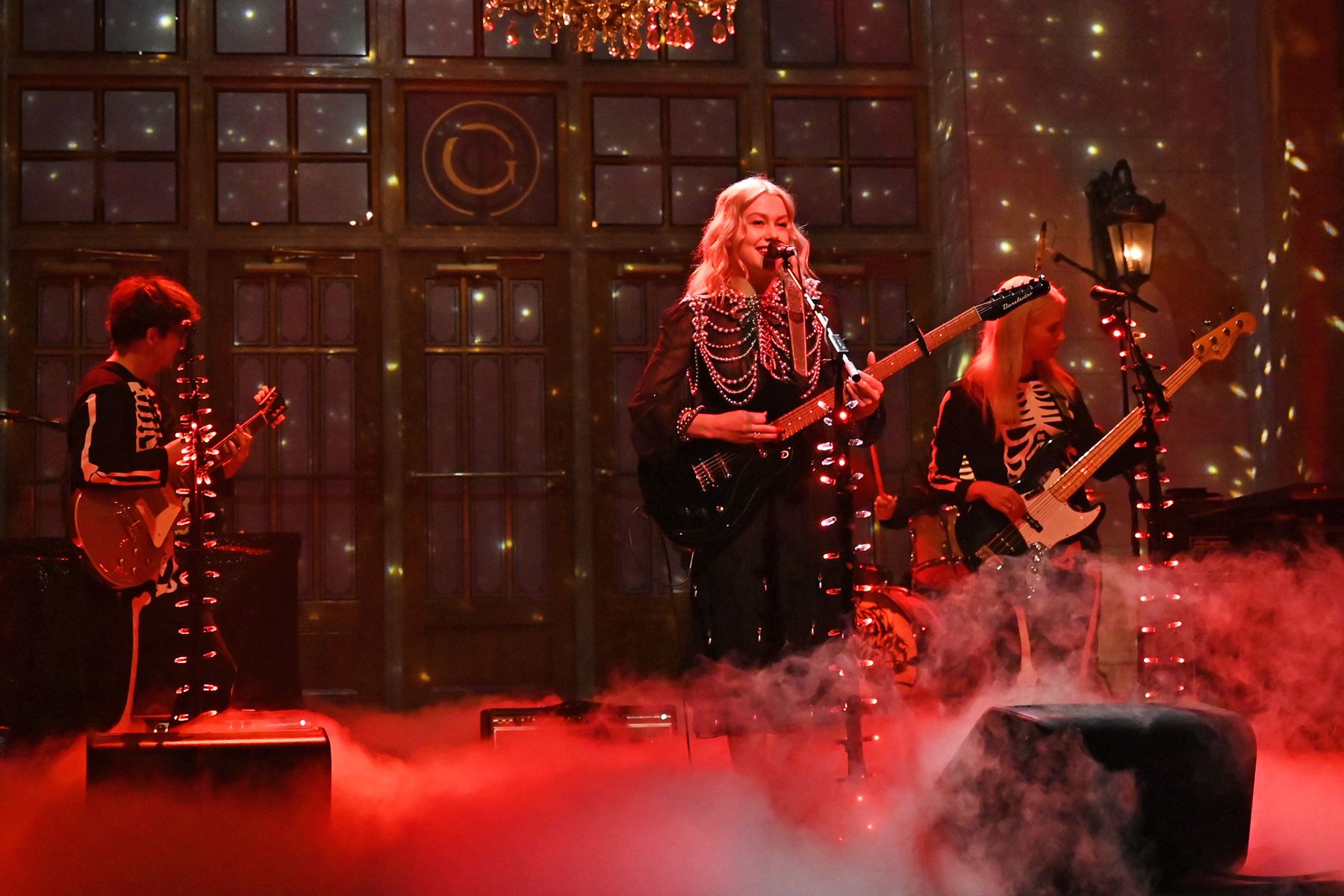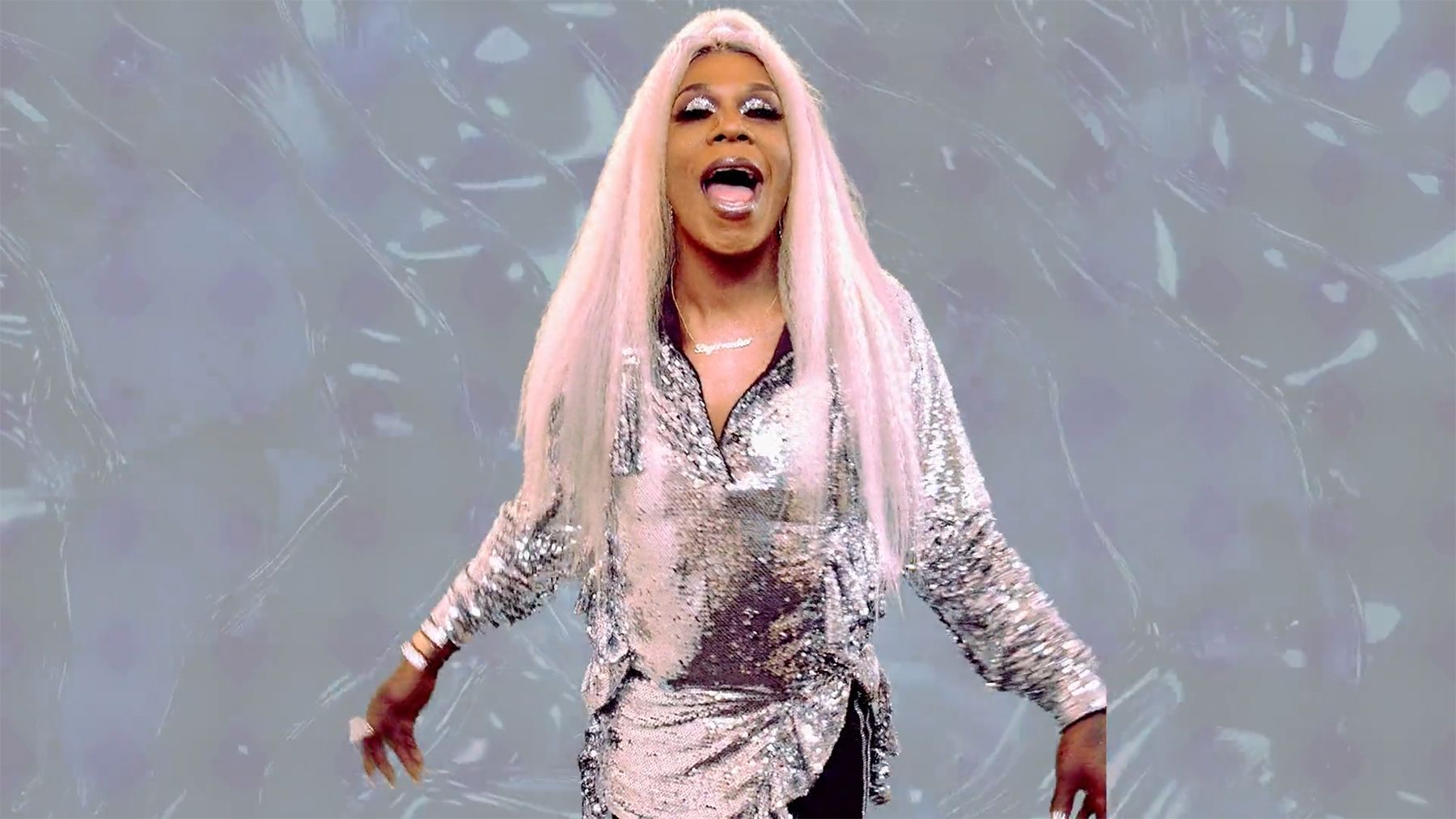
10 Things You Didn’t Know About ASAP Rocky’s ‘AT.LONG.LAST.A$AP’
Coming off of his debut studio album LONG.LIVE.A$AP, ASAP Rocky was in a bit of a conundrum.
He had proven the doubters—who believed he was just another short-lived mixtape rapper of the blog era—wrong by making a hit-riddled billboard chart-topping event album. This, at minimum, cemented his place in the center of the hip-hop and pop universe at the time. Yet, the project’s lasting impression on the mainstream centered around a formulaic single with a kitschy double entendre laden 2 Chainz hook about having a “fucking problem.” Not to mention, it contained song-stealing verses from two titans of rap’s mainstream, Drake and Kendrick Lamar, also vying for a top spot.
Rocky has always been dead set on separating himself, and the time between albums one and two proved no different. “Last time I was more concerned, subconsciously, with doing something mainstream,” Rocky said about his first album, speaking to Billboard in 2015. “Once I did that, I not only proved to the world but to myself that I could do anything that I wanted. I don’t want to be cliched. If you want to consider my shit alternative, so be it. I just look at it as eclectic.”
His second album, AT.LONG.LAST.A$AP, arrived on May 26, 2015 without a clear hit single in sight. It was also laden with a plethora of new influences, most notably psychedelics. The project was a hard left turn, in many respects, from Rocky’s pop-rap of yore and was littered with alt-rock trippy tones that were a clear attempt to separate Rocky the artist from Rocky the consumerist entity.
Looking back on the album 10 years later, it’s easy to see traces of Rocky’s psych-rock rap fusion on modern music, whether in Lil Yachty’s 2023 experimental project Let’s Start Here or in late-2010s SoundCloud-era records by artists like Lil Peep and XXXTentacion.
We put together a list of forgotten facts and fresh revelations about LONG.LIVE.A$AP as a tribute to an album whose impact may have proven more enduring than initially recognized.
In a 2015 interview with GQ, Rocky said, “I’m claiming ownership of my legacy. Look at it: At.Long.Last.A$AP. A-L-L-A. Like slang for ‘Allah.’ It’s the return of the god MC.”
Rocky was famously named after the rap legend Rakim, thus the album was his statement of reclamation of the title formerly held by his namesake. (Rocky himself has never claimed to follow any specific religious teachings; Rakim converted to Islam at 16 years old.)
While there are multi-genre influences on A.L.L.A., there is no doubt that Rocky’s rapping ability is also showcased throughout the album. The mid-album sequence from “Excuse Me,” to “JD,” to “Lord Pretty Flacko Jodye 2’’ displays a distinct ability to rap on a range of beats from more classic NY boom bap to what was a more contemporary alternative trap cadence. Rocky even went toe to toe with rap heavyweights on the project like Lil Wayne on “M’s” and Yasiin Bey, formerly Mos Def, on “Back Home.”
During an interview with Elliott Wilson in 2015, Rocky also expressed even more purpose for displaying his rap prowess on A.L.L.A. “I got to a point where I was 26 and rap was shit,” he said. “I hated rap in 2014, I’m getting a headache thinking about it…I got to a point where I was like, “I need to do something about this shit.
In 2015, no one was more loud and proud about using psychedelics than ASAP Rocky. “It helps me cope with life,” he revealed to Billboard about the drugs at the time. “I’ve been doing this stuff since I got into the industry. People are scared to talk about it. It’s trippy. My art, my visuals. [It’s all] very trippy [because of it].”
Rocky is far from the first musician to take part in hallucinogenic drugs, but trends resurface and he was at the center of LSD and mushroom’s reemergence in pop culture in the mid-2010s alongside other East Coast rap up-and-comers like Flatbush Zombies and The Underachievers. But Rocky seemed to take it all a step further as far as publicly reported incidents and outcries against “straight edge” people even if they were a bit in jest.
In an interview with Timeout, Rocky recalled his specifically enthralling first experience he had with mushrooms and women that changed everything. “Yo. OK, without getting anyone in trouble, I was with my homeboy and some trippy celebrity chicks,” he recalled. “ [It lasted] 23 hours. I was trippin’ till the next day. When I woke up, I was like, Damn! I did that shit! That shit was dope. It was so amazing. It was a-ma-zing. Nothing was like that first time.”
This type of behavior would expand to even wilder experiences like Rocky’s alleged “Acid Fueled Orgies at SXSW” reported on by The New York Post in May of 2015. But what the hallucinogens really seemed to impact the most was the music. Again for Timeout, Rocky claimed that his experiences with the drugs removed his need for mainstream external validation. “I never really gave a fuck, man, but this time, I really don’t give a fuck,” he proclaimed about his attitude in making A.L.L.A. “I don’t care about making no fucking hits.”
Naturally, doing psychedelics opened Rocky’s mind up to genres and sounds from the past. In his Billboard interview, Rocky listed some of the artists he referenced on A.L.L.A. once he had done his full exploration. “Portishead, Massive Attack, Thom Yorke, and “old ’60s psychedelic shit,” he proclaimed as influences. “I’ve been listening to T. Rex all day. You fuck with Electric Warrior? The fucking album? Man! Let’s talk about perfection.”
For those unfamiliar, T. Rex was a wildly innovative band in the early ‘60s underground hippy scene and made records that fused psych rock, folk, and glam rock. As a rapper who constantly proclaimed to be both a “trippy” and “pretty mother fucker,” it’s no wonder that a band that exuded this exact type of aesthetic appealed to Rocky so greatly.
But this was just the tip of the iceberg of Rocky’s musical exploration and intrigue around that time. In an interview with Jeff “Chairman” Mao for Red Bull Music Academy Rocky also expressed his love for Iggy Pop’s “I Wanna Be Your Dog” and “I Feel Free” by the band Cream, even going as far as singing the hook for the live listening audience during the conversation.
“We talked with him about a lot of stuff and just from hanging out with him it was apparent that he was an eclectic dude,” Isaac “Zac” De Boni, one half of the Australian production duo FnZ, told Complex. “He has so many different influences. There wasn’t going to be a box that we had to be in because he loves experimenting.”
FnZ co-produced the A.L.L.A. centerpiece “L$D,” a song with obvious sonic ties to ‘60s and ‘70s psych rock. “With him in particular, you always gotta bring something special and left,” Michael “Finatik” Mulé, the other half of FnZ, proclaimed about working with A.L.L.A.-era psychedelic Rocky. “Something that’s going to perk his ears, that he hasn’t heard before.”
The trifecta of production duo FnZ, guitarist Michael Burman, and super producer Jim Jonsin may be more responsible for Rocky’s rock fusion on A.L.L.A. than most people have ever realized. “I got to meet Rocky early on. We worked on his first album with [Polo Grounds Founder] Brian Leach,” Jonsin told Complex. “But then on this album, he had some new ideas and directions he wanted to go in.”
Jonsin met Rocky at a studio—Parkland Playhouse in Parkland, Florida—the night before they began working on what would eventually become “L$D.” “It was like 1AM and he was talking about creative ideas and things that would influence some ideas,” Jonsin said. “Some psychedelics were talked about. I said, “Well, that’s interesting, but, you know, I’ll just drink some whiskey.”
Jonsin met up with his in-house guitarist Michael Burman the next day at his built-in home studio in Parkland before Rocky arrived relaying the artist’s message from the day before. “We got in the studio a little earlier and I mentioned there was this song from Band of Horses called “Funeral,” Jonsin said. “I love the tone of that guitar in that song so I said to Burman, “Hey, let’s find a tone like that, figure out some chords, and come up with something that feels trippy on some Pink Floyd floating vibe,” clearly prepping something based on Rocky’s desires.
Later that evening, Rocky pulled up. FnZ, who were also signed to Jonsin’s production imprint at the time, had also arrived and were ready to work. Also in attendance was in-studio engineer Niko Marzouca. “Not just with Rocky, but for every session we would be like a team,” Burman remembered. “Whether it was Machine Gun Kelly, ASAP Rocky, or Daddy Yankee, we were pretty much like a band.”
Burman also brought some King Crab to the home studio, per Rocky’s request, as his Dad owned a wholesale seafood business in South Florida. “Everyone went out into the kitchen to start eating the crabs, but I stayed back in the A room,” Burman said. “I was in there, just noodling around, then I started playing that riff that you hear at the beginning and throughout “L$D.” Then I added a little harmony and was running it on a loop.
Jim heard it from the kitchen and ran into the room.” Jim, who had been sipping on some bourbon whiskey as promised from the day before, emerged and started singing melodies in drunken wonder. “I asked Niko Marzouca to turn the autotune on crank because I’m not a great singer. I’m more like a bad version of Brian Adams,” Jonsin said. “Burman and I pretty much came up with the core idea, some of the phrasing and melodies, and even some of the words to the song. When I got out of the booth, I played this mood bass line and from that took my 808 drums and put them through this Fender guitar amp modeler in Logic to make it sound broken and dirty.” Burman also added some cementing sounds from an electronic instrument called a GuitarViol, which is a hybrid of a guitar and viola, and what resulted was straight out of a ’70s rock vortex.
When listening back to “L$D” it’s impossible not to notice the transfixing ethos that the guitar and bass add to the song. It turned out, that Jonsin and Burman had landed on exactly what Rocky needed to levitate into the stratosphere. “When Mike and Zach came in, they started adding more flavor and keyboard ideas and bigger drums to help with the arrangement,” Jonsin said. “So by the time Rocky walked in, we had an idea worth playing. When we played it for him, he immediately was into it.” Rocky, according to the crew, mostly started moving to the rhythm and getting locked into the flow until he was ready to create. “Then, Jim just handed him the mic and he was just tracking in the room,” Burman remembered with delight. “He just started singing and dancing with the music.” The crux of the full song was done within two hours.
“He had all these crazy ideas coming to him and it was all of us in the room together just tinkering away,” Michael “Finatik” Mulé remembers. “I don’t think we really made anything that psychedelic before that ever.” While Rocky was definitely into psychedelics and ’60s and ’70s music, actualizing that into his own work may not have actually happened if not for this session. According to FnZ, Burman, and Jonsin, the rest of the album’s psychedelic work done with people like Joe Fox, Hector Delgado, and Danger Mouse was all done at least a bit later. Even though the sessions in Parkland lasted around ten days, day one may have been one of the biggest spurrings of A.L.L.A.’s core sound.
Sidenote: Jim Jonsin, who eventually became a professional race car driver himself, claims to have also taken Rocky race car driving for the first time during his stay in Parkland.
Jim Jonsin connected with Michael Burman initially because he needed a guitarist to complete his band of session musicians. That said, their lasting chemistry was due to an alignment in background.
“I think one of the reasons why me and Jim clicked so well early on was Jim loved classic rock and that style of music, and he liked that I brought that flavor,” Burman said. “One of the bands I played in for many years was a classic rock cover band. When I met Jim, I was trying to work in rock music, like that was my thing. I was coming from a world where, as a guitar player, the most fun stuff to play was rock music because it was all guitar. At the time, every weekend I was playing Pink Floyd, Led Zeppelin, Crosby Stills and Nash, and Jimi Hendrix. I, never in a million years, thought I’d be working in hip-hop or with hip-hop artists.”
Jim Jonsin, I’m sure, would have made a similar statement to Burman at some point in his early career. “I grew up in the ’70s and ’80s, and I mostly listened to rock and roll, especially Pink Floyd and Led Zeppelin,” Jonsin said. “So with almost any session I’ve worked in, I’ve always looked to put rock and roll in. You go all the way back to Trick Daddy’s ‘Let’s Go.’ That song samples ‘Crazy Train by Ozzy Osbourne. That was one of the first records I ever scratched on a turntable.”
Jonsin’s musical upbringing occurred amidst the natural rock and hip-hop crossover during the ’80s and he just ended up being a more transcendent producer in the hip-hop space. He passed this path down to Burman. Without their combined background it is quite likely that Rocky’s psych-rock hopes never get actualized in quite the same way.
Rocky found the sound he was searching for when he made “L$D.” Now, looking back on the record 10 years later, it’s easy to see how much its influence has spurred experimentation by others within hip hop. “I think it inspired a lot of artists to reach in their experimental bag and do something different,” Mulé said. “It urged them to try and push the levels of creativity and not be confined to making whatever genre that people try to box you in.”
Rocky was, by his own admission, disappointed by the sound of mainstream hip hop in 2014 because it wasn’t necessarily as forward-pushing as he would have liked. What he discovered, within his experimentation with psychedelics and in-studio collaborations, was that perhaps he had to reach back to create the future. “I think back then, it wasn’t as accepted in top 40 hip hop, psychedelic rock, or that guitar sound,” Burman said. “People would want something that didn’t sound like a guitar. The goal was, like a guitar that doesn’t sound like a guitar. Then years later, especially around [COVID-19] time, you started to have a whole genre of hip hop songs that were now all guitar-oriented.” Jonsin is aligned with Burman’s purview, once again, as well. “I remember Lil Peep and all these other artists coming out using rock tones and going down that lane after us,” he said. “I feel like “L$D” had something to do with future artists, sonically.”
But the impact of the record wasn’t just years and years down the line. “Being able to go and see him perform that song live, and to see the impact it had, was amazing,” Mulé said. “Rocky also said something about how it opened [him up to] a new kind of audience that didn’t really listen to him before.”
Burman, though, was a witness to the song’s most immediate impact. “Within a day of the album coming out, people were on YouTube making lessons on how to play it on guitar,” he said. “That blew my mind. It was like the first time [during that era], guitar was heavily in the forefront.” Burman also forayed his work on “L$D” into getting praise from his idols, not just internet guitarists.
When recording Rocky’s next album, Testing, three years later, Burman and Jonsin bumped into Lenny Kravitz. Jonsin mentioned that Burman “wrote all the fucking guitar parts and the music.” And Lenny responded by saying, “What you did on that record reminded me of some Hendrix-type stuff.”
When it comes to “L$D,” many people remember not just the song but the music video. The visual was innovative.
However, what really set the music video over the edge was its inspiration derived from the psychological drama film Enter The Void. Rocky claimed his music video director, London’s Dexter Navy, put him onto the film years before and they together collaborated on how to incorporate the visual elements into the world of “L$D.” Now, much of the twisted plot of the original film is left out, however locationally and visually one can notice a lot of clear similarities.
Both visuals capture the kaleidoscopic lights of the city of Tokyo and transport you to what feels like a fantasy realm. Many people consider Rocky one of the biggest innovators in music videos in the last decade and this work is surely one of his most defining.
In order to continue his inspired path spurred by psychedelia, Rocky felt he needed to venture outside the US. He famously not only went to London for months but also completely went off the grid. “Weed, pussy, those are very big distractions for me. So you gotta cut the phones off so you don’t get no pussy and you can’t smoke no weed,” Rocky proclaimed in his CRWN interview with Elliott Wilson. “You just gotta worry about ya work. I sacrificed pussy and weed for y’all mother fuckers, for months.”
Now, Rocky didn’t just go to London with the intention of escaping it all. He also went there to collaborate with musical savant Danger Mouse, who was living there at the time. Prior to working with Rocky on A.L.L.A., Danger Mouse worked with artists like CeeLo Green on their artist project Gnarls Barkley, The Gorillaz, James Mercer on their artist project Broken Bells, Beck, The Black Keys, MF Doom, and Portugal The Man. Thus, he was an obvious choice due to Rocky’s interest in going into a more alternative direction.
“He’s been a big inspiration of mine since I was about 19 years old,” Rocky said on CRWN. It’s clear that their chemistry worked wonders as Danger Mouse produced three of the album’s most effective and trippy tracks, “Holy Ghost,” “Pharsyde,” and “West Side Highway.” “When you’re trippin’ balls, you make some far-out shit!” Rocky proclaimed to Timeout about his psychedelics-riddled UK sessions with Danger Mouse.
He also told the publication that his studio had “antique, fuckin’ old-ass appliances” and that he and Danger Mouse would stop midway through 3AM sessions to watch Woody Allen movies or listen to Pink Floyd, the Beatles, and Bad Brains.
Some of the biggest lore of A.L.L.A. is surrounding Rocky’s mysterious collaborator Joe Fox, who featured on five tracks with guitar and vocals.
Rocky, during his time in London, literally happened upon Fox busking for money on the street trying to sell CDs. During an interview he gave during all the hoopla of A.L.L.A., Fox recalled the event for The Fader. “The night we met, I had just sold three CDs to a group of Swedish girls,” he said “I sold three CDs for 15 quid, so I was very happy with myself. I kept going through Soho. I see Rocky, and a producer [we’d end up working] with on the album, and maybe one other guy, a studio guy. I did my usual routine. I said, “Do you guys want a CD?” Rocky said, “No, but play something.” I went, “Oh, okay,” and I played, and then, here I am.”
Fox claimed that Rocky then invited him to Starbucks and they eventually ended up in the studio with Danger Mouse. In his CRWN interview, Rocky at one point recalled innocently wanting to interact with a “homeless man” on the street and being ignored randomly so maybe in 2014/2015 this was just a thing he would do with strangers. Fox was also unhoused when Rocky “discovered” him.
The release of A.L.L.A. was likely a harrowing and strange time for ASAP Rocky. He had made a far-out and experimental body of work. He felt he had put his musicality and artistry front and center, pushing the general state of music forward. Yet, much of the album was created before tragedy struck.
On January 18, 2015, Steven Rodriguez prominently known as ASAP Yams, passed away by cause of accidental overdose. Yams has famously led the ASAP crew, and Rocky specifically, to stardom and was a looming figure symbolizing wisdom and brotherhood. Rocky was, in theory, presenting himself as the artist Yams had always believed he could be in the midst of mourning his death.
“I’ve been having to [re-evaluate] since he died, man,” Rocky said in a 2015 interview with The Guardian. “It’s going to have to be that way. It was always good to have that second opinion because I always knew what I wanted to do. [But] to have my best friend there agreeing with me, let me know I wasn’t crazy. He kept me sane because he used to humble me even at the height of my career.”
Rocky reached even more heights upon the release of A.L.L.A. due to an even wider respect for the totality of his craft. Yet, the bittersweet feeling of it all stayed with him during it. In a post-SXSW performance interview with Vibe, Rocky answered the interviewer’s first question about how he was feeling with a simple and solemn, “I wish Yams was here.”



